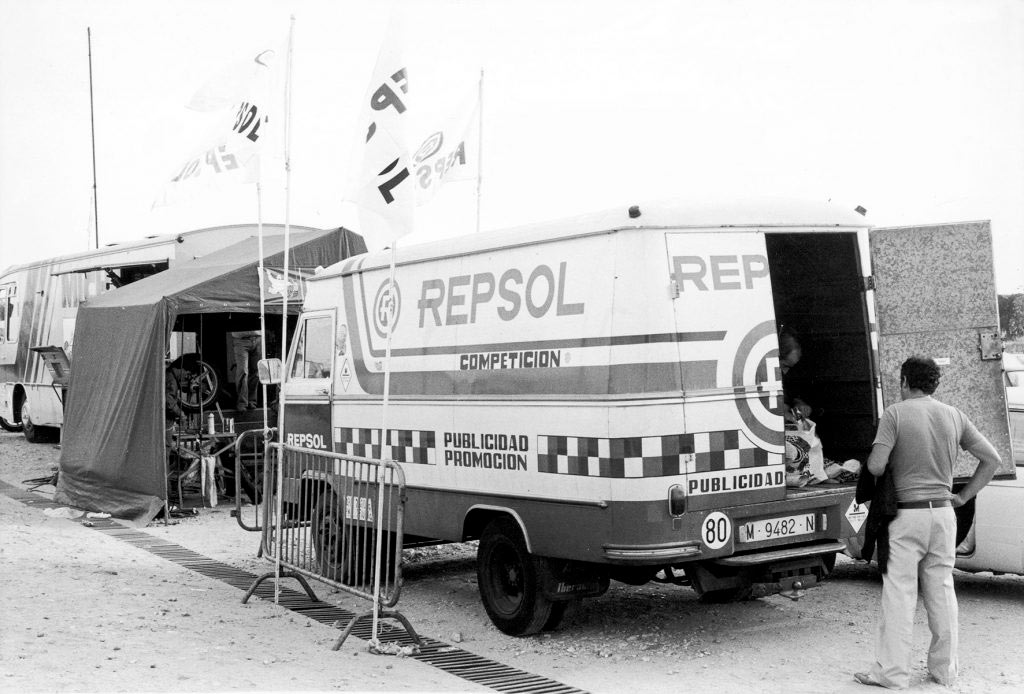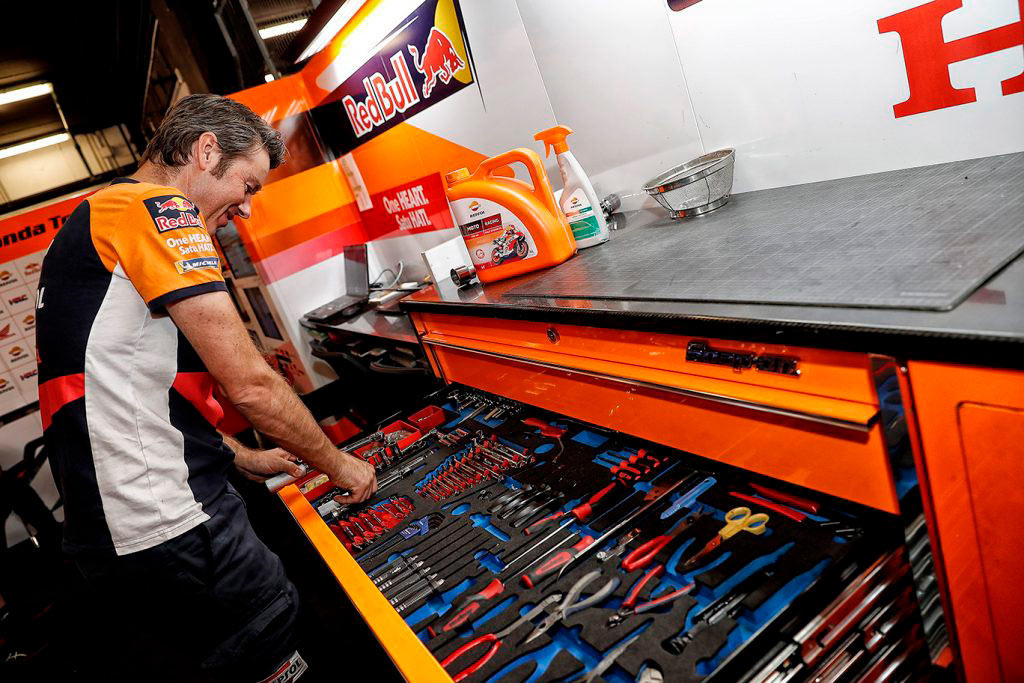Every mechanic knows how important it is not to lose any screws! That’s why the trays on which the mechanics place the screws and small parts are magnetized, just like some MotoGP tools.
Are MotoGP tools rare?
The answer to the question above may surprise us but, the truth is, that the MotoGP tools available to Marc and Pol’s mechanics are actually quite similar to the ones we could find in our garage at home. There are exceptions to this rule and some parts are specific solutions that are custom-made. As expected, there are several types of tools to deal with any situation as efficiently as possible.
There were times when things weren’t made so easy during the world championship: riders like Ángel Nieto had to prepare, load, and unload their machines in a van full of tools and spare parts. Fortunately, modern teams have all the facilities to simplify the work and save time.


Standard tools
The first thing you absolutely need is fixed spanners, which are necessary to tighten and loosen nuts and bolts through leverage. These are present in the standard measurements, from 7 to 18 mm, even though the equipment may include one or two above that size. Screwdrivers are also essential, in different sizes and lengths to be able to reach every corner.
In addition to fixed spanners, the team has Allen and Torx spanners in their usual sizes. Some of them are fixed and some are designed for coupling with T-spanners or ratchets, when necessary, always keeping in mind that you’ve got to use the right tool for the right job. The last type of spanner we can find at the pit are torque spanners, used to tighten everything just right.
Among cutting and clamping tools, we have all the usual suspects: scissors, pliers, tongs, parrot nose pliers, etc. Some of these parts have specific shapes to carry out specific functions, such are removing circlips or cutting wires.
Other auxiliary elements we can find are stands to place the bike, which are useful to block some of its parts. There is a good selection of extenders, handles, shafts, and accessories that allow for changing heads with greasy hands and make it easier to work on the bike. Finally, air and vacuum hoses can help us when we need to clean or to connect them to other devices.


Power tools
Fast, convenient, and accurate: power tools are of great help to simplify many of the assembly and adjustment tasks. Screwdrivers, impact guns, and drills are some of the most common devices, both in our everyday tasks and in the pit. Several electronic measurement tools, such as multimeters, thermometers, and electronic gauges are also handy.
One of the most important tools are computers, which are used to connect to the ECU and configure the bike. These computers have programs to study the data downloaded from the machine and review the status and mileage of parts that need to be changed periodically. Another one of the electric tools that have recently come into the pit are electric starters, smaller than those we saw in previous seasons.


Various accessories
Every mechanic knows how important it is not to lose any screws! This is why the metallic trays where mechanics place screws and small parts are magnetic. Magnetizing a tool can also be a good way to affix it to a point while we work, which comes in handy with torches, for instance.
Some specific tools are used to change and purge fluids from the engine: oil syringes, bottles of break fluid, or refuelling tanks. We can also find tools for specific uses, such as extractors, spanners with unique angles or twists, and tools for adjusting and assembling suspensions. Just in case, to ensure that everything is measured right, the team also have a set of feeler gauges to measure gap width.
As everyone who works in an environment with lots of dirt knows, cleaning is one of the most important tasks. Outside the pit, but always nearby, we can find cleaning and degreasing stations to keep parts as clean as possible at all times. Another cleaning component that you absolutely need are paper towels — they’re as basic as it gets.


Liquids and supplementary products.
In addition to Repsol lubricants and fuels used to keep the engine tuned at all times, the pit also has loosening, cleaning, and lubricating products. Tubes are frequently used for precise application.
Finally, there are two components that can prove truly miraculous and that are absolutely needed in any good handyman’s toolbox as well as in the pit: duct tape and plastic ties. Even though the effectiveness of these methods is more than proven, in competitions they are best used as a last resort!


 Join Us
Join Us  Join Us
Join Us 